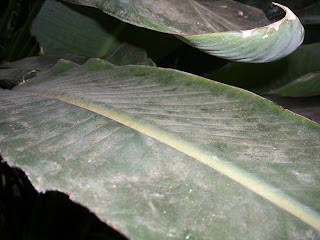I have chosen to study repeat in the form of nature, exploring how organic substances naturally grow in patterns and the shapes they produce. To aid my research I took a stroll around the Winter Gardens in Sheffield, home to over 150 different types of plants from around the world; what a perfect place to admire unusual plants and record the repeated patterns which have been formed.
TREES:
After looking at the bark of different trees, I soon discovered the number of differences, ranging from a woven texture which appears soft and fragile as it peels away, to a structured style where there are simple patterns imprinted into the actual bark. I particularly like the pattern presented in the first image. It has a very unique aspect with separate strands peeling away, overlapping and intertwining. Reminds me of the techniques I was taught in Richard Sweeney's workshops.
FLOWERS:
I was fascinated to learn the great lack of similarities of repeat forms in flowers. Naturally the association is based on a steam and petal structure, however, delving in further to understand how each petal has grown, how many flowers on one steam, the final shape of the flower and how the centre of the flower has been formed; I soon discovered these presumptions were very wrong.
LEAVES & GRASS:
When studying repeated patterns in leaves and grass, I chose to not only look at how they are formed individually but also together. I looked at how patterns on imprinted on the leaves and how they perhaps curved, looking at how the edges presented a form of repeated. I also studied how they naturally grow together, which direction they grow, what shapes they form and how they intertwine together.
During my wander through the Winter Gardens, I came across a small fountain which captured my eye. I was intrigued by how the water moved in different ways along it journey from the top of the fountain back into the pool of water at the bottom. The forms of the water are very structured and accurate as it is ejected from the fountain, however, when it hits the pool is very uncontrolled, producing ripples which fade away gradually the further away the water moves from the fountain. Due to this interested I have decided to research further into water movement, looking at different forms of water, and different patterns which can be produced.


















No comments:
Post a Comment